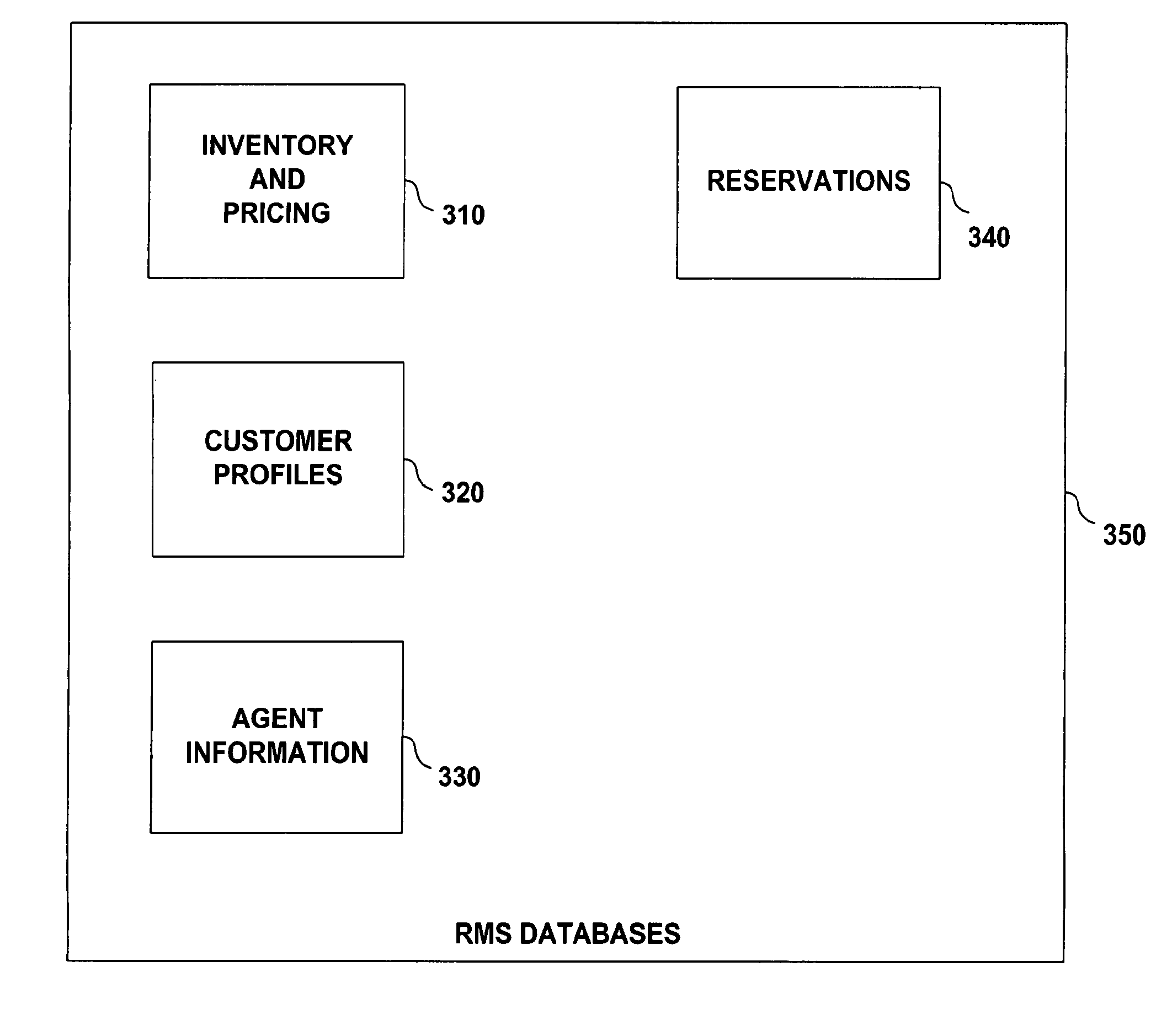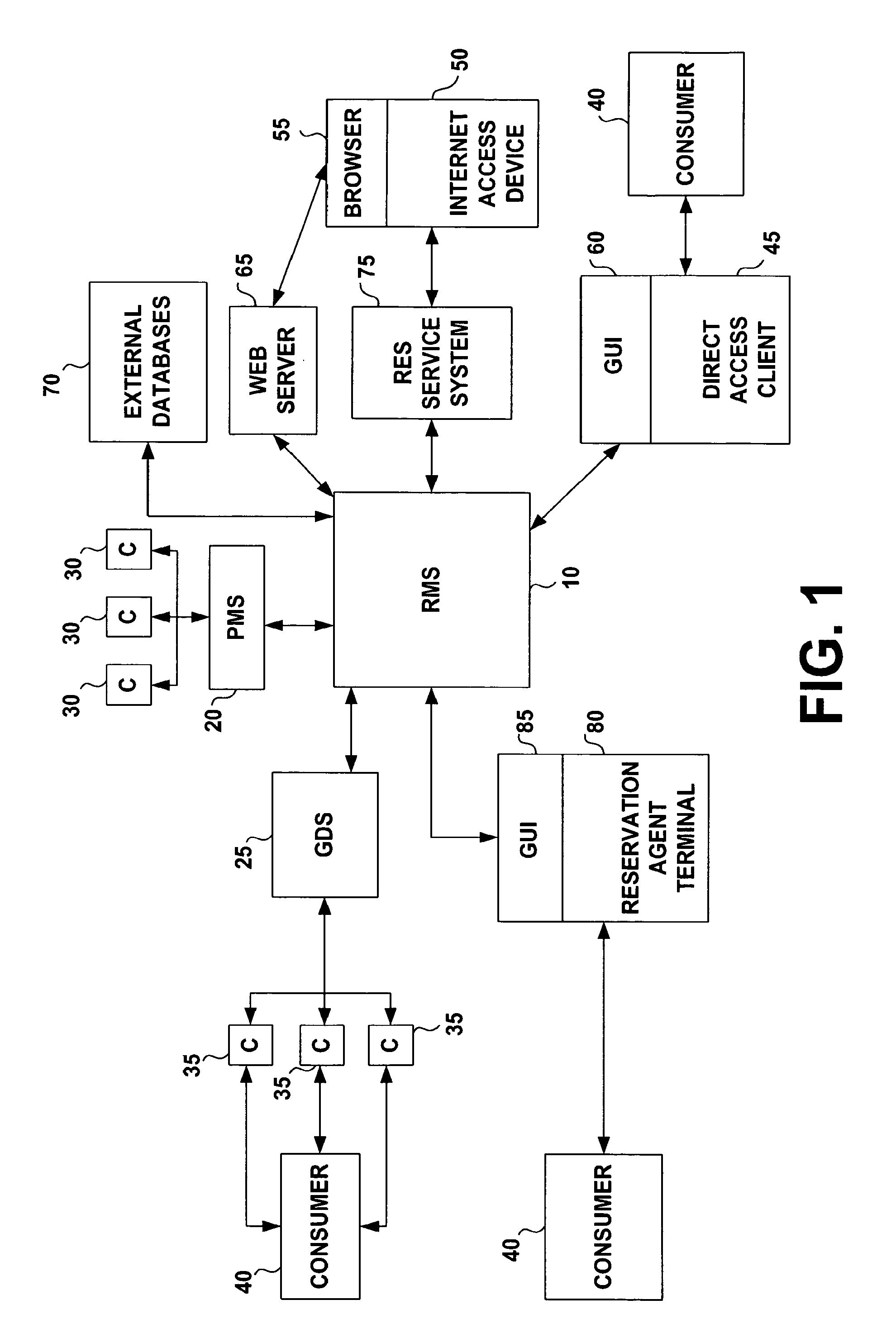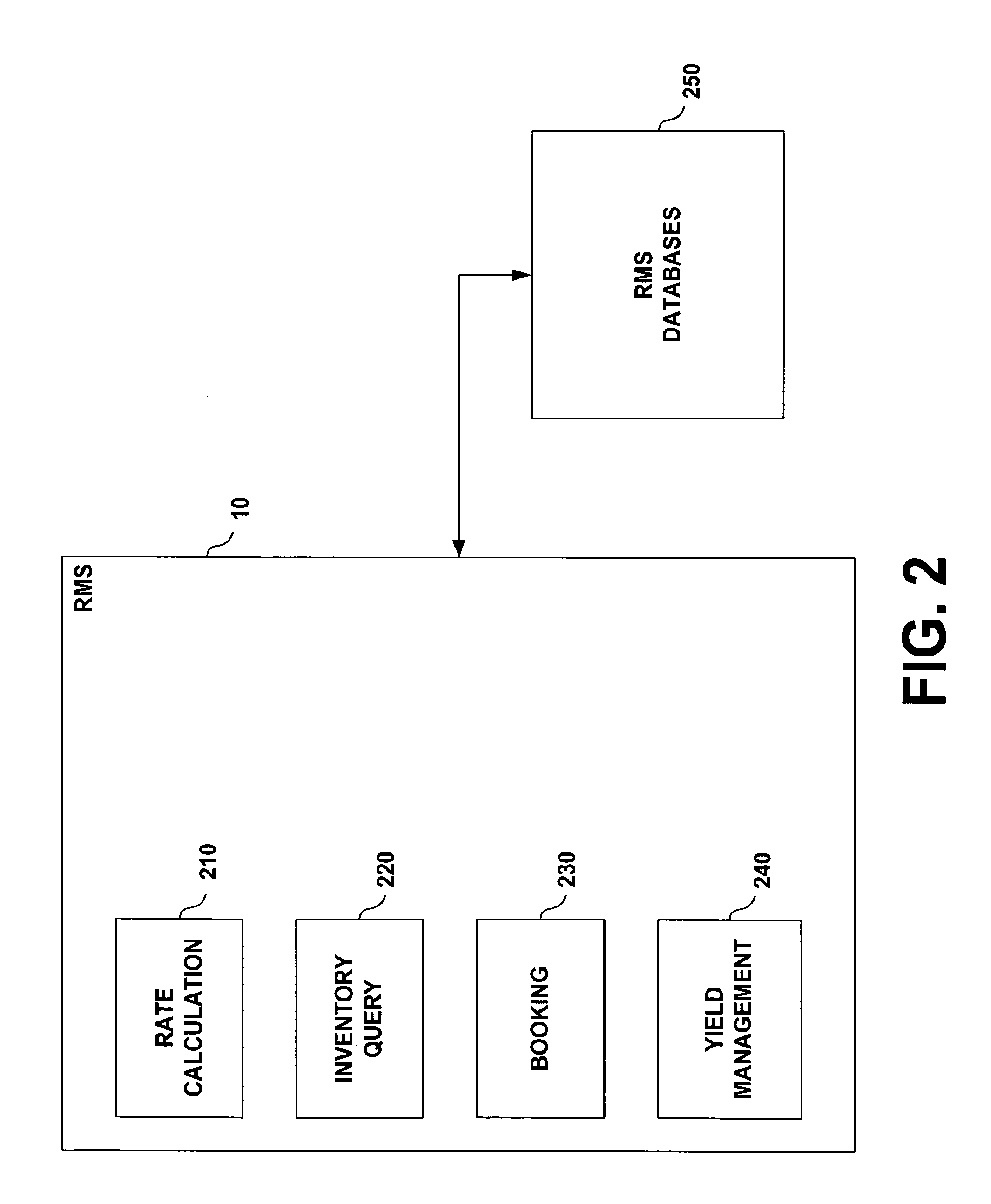Global reservation transaction management system and method
a technology of transaction management and global reservation, applied in the field of global reservation transaction management system and method, can solve the problems of not being able to meet the needs of other companies in the industry, unable to achieve the goals of achieving the goals, and unable to achieve the satisfactory results of data access,
- Summary
- Abstract
- Description
- Claims
- Application Information
AI Technical Summary
Benefits of technology
Problems solved by technology
Method used
Image
Examples
first embodiment
[0159] rates determine the selling price associated with a stay request. Rates are calculated from a specific rate and an optional adjustment for the attributes in the stay request. The specific rate for the inventory type (ROH or non-ROH) requested was created from a generic rate. Generic rates reflect the rate policy of the hotel for a period of time. Typically, specific rates are created for: standard (rack) rates, group discounts, private negotiated rates, corporate rates, and packages. Specific rates may stand alone or may refer to its generic rate.
[0160] To figure the actual rate in a particular booking circumstance, first, establish the specific rate to use (rack, group, etc). Secondly, find the specific rate for the period associated with the stay day. Thirdly, if the specific rate stands alone, use the rate amount corresponding to the occupancy in this stay request (single, double, etc), modified for day-of-week, if applicable. Fourthly, if the specific rate refers to its ...
second embodiment
[0162] According to the present invention, rates determine the Price of a reservation component. The Price is the calculated amount of money asked for the component associated with a specific stay request. The component is usually a room but could be a service. The amount is calculated using the algorithm of an appropriate Rate Season. A Rate Season reflects the rate policy of the hotel for a period of time. The appropriate Rate Season is determined by the Rate Code and stay day. The Rate Code is a common identifier between a specific Rate Plan and one or more Rate Seasons. The Rate Plan may stand alone or may be specified by a Program. Programs are deals created for marketing purposes. Typically, Rate Plans are created for: standard (rack) rates, group discounts, private negotiated rates, corporate rates, and packages.
[0163] To figure the Price for a room component in a particular booking circumstance, first, solicit the minimum stay request information: a specific hotel, one or mo...
PUM
 Login to View More
Login to View More Abstract
Description
Claims
Application Information
 Login to View More
Login to View More - R&D
- Intellectual Property
- Life Sciences
- Materials
- Tech Scout
- Unparalleled Data Quality
- Higher Quality Content
- 60% Fewer Hallucinations
Browse by: Latest US Patents, China's latest patents, Technical Efficacy Thesaurus, Application Domain, Technology Topic, Popular Technical Reports.
© 2025 PatSnap. All rights reserved.Legal|Privacy policy|Modern Slavery Act Transparency Statement|Sitemap|About US| Contact US: help@patsnap.com



